Although mushrooms and plastic seem to be very different, they have more in common than one might think: Just as plastic was once invoked as a solution to all manner of man-made problems, today the world-saving superpowers of mushrooms are widely discussed. A look at the promises of plastic and mushrooms — and their potential pitfalls.
Our lives are inescapably entwined in relations with the omnipresence of fungi and plastic. Though seemingly very different — living and non-living, for instance — fungi and plastic have more in common than one might assume. Both are alchemists, transforming themselves and the world around them, and shaping new realities and possibilities. The history of our planet has been greatly formed by the actions of fungi, and the presence of plastics. A billion years ago, fungi ate their way through the rocky surface of the earth, leaving organic matter in their wake and paving the way for life to move from waterways to land. Fungi are all around us, though perhaps under-acknowledged. This lively and vast kin(g)dom of millions of species make life on land possible as they break down organic matter, support nutrient transportation between plants and trees constantly supporting and making way for life on Earth.
When the first plastic was invented, it was made to solve the problem of expensive and finite resources derived from more-than-humans. Plastic was first invented in 1907 as Bakelite and mass production of polymer synthetics began during World War II. Since then a host of inventions have been made possible such as cheap packaging for meats and other foods. The presence of fungi and plastics is inescapable as they permeate their way into every part of our lives. Even the human body is teeming with fungi, bacteria, and other microorganisms. Plastic too, has made its way into our bodies as recent studies show, microplastics can even be found in human placentas and breast milk.

Bakelite pool balls, Image via trift.org
THE PLASTIC PROMISE
In the 1960s, the mass production of plastic offered the world a material that would purportedly solve a lot of the world’s problems. Food, for example, could be mass produced, shipped, and sold around the world in cheap and lightweight packaging. There was hope for this new material and the boundless possibilities that it promised. And as PLASTIC WORLD shows, the art world also took up this new material to bring to life artists’ wildest imaginings. Plastic can be moulded into almost anything and so humans turned it into almost everything. It is hard to imagine a world without plastic as it has made its way into nearly every part of our lives — it holds water to be shipped and sold, it is woven into our clothing, crafted into our technology, embedded into our food systems, used to tie our hair back, and straighten our teeth. The complex molecular structure of plastic makes it extremely hard to break down and our plastic waste is piling up. As plastic factories leach toxic chemicals into streams and rivers, pop bottles and trash form islands of plastic waste in the oceans, and microplastics pollute nearly everything and everyone around us — we are bound to a promising material gone wrong.
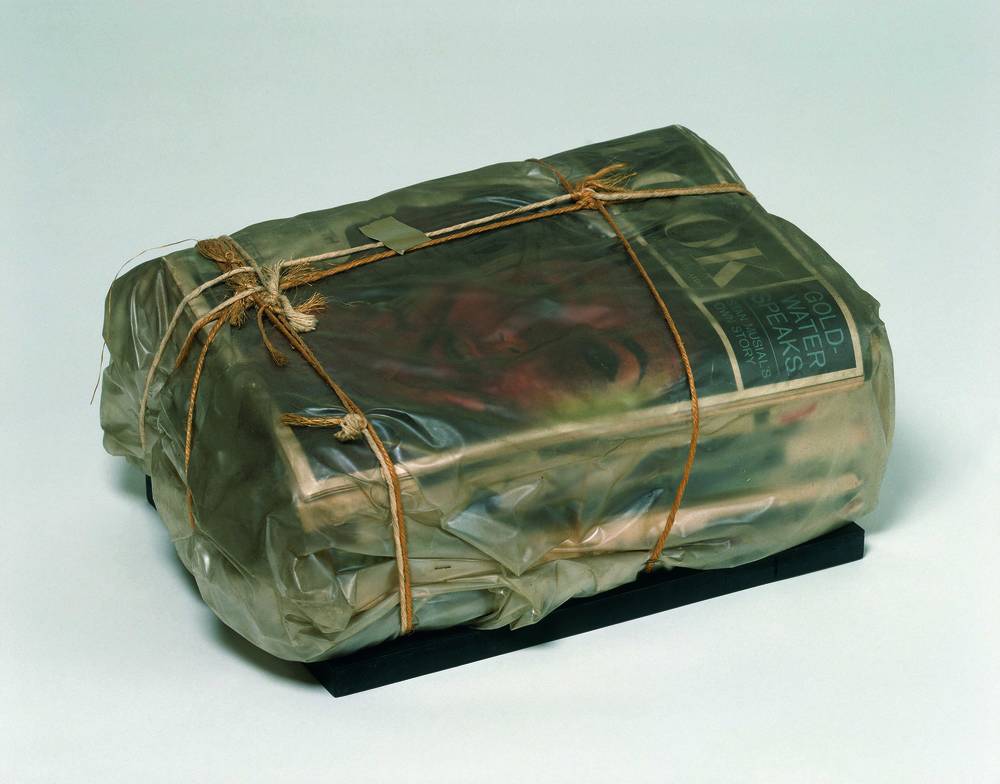
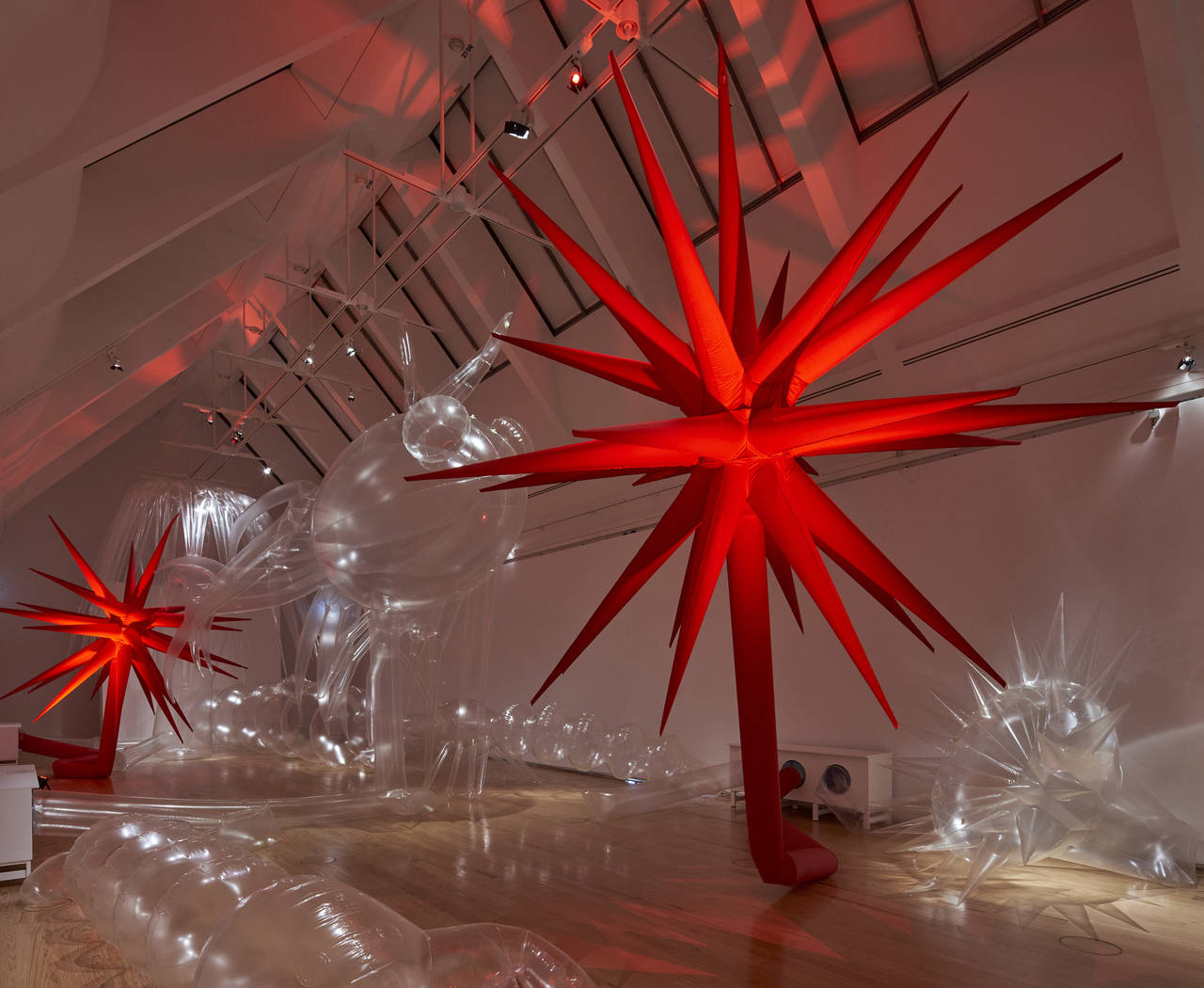

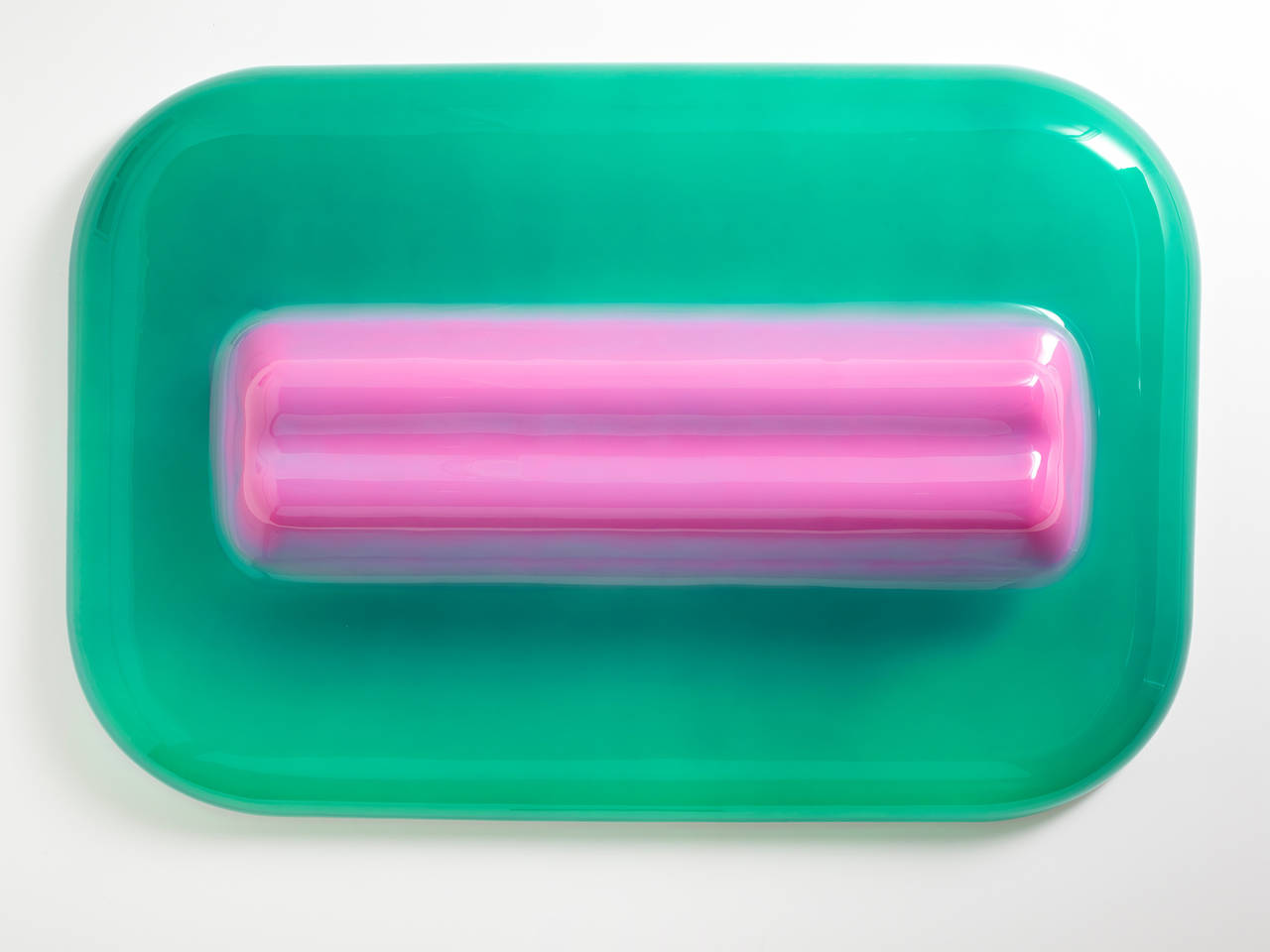
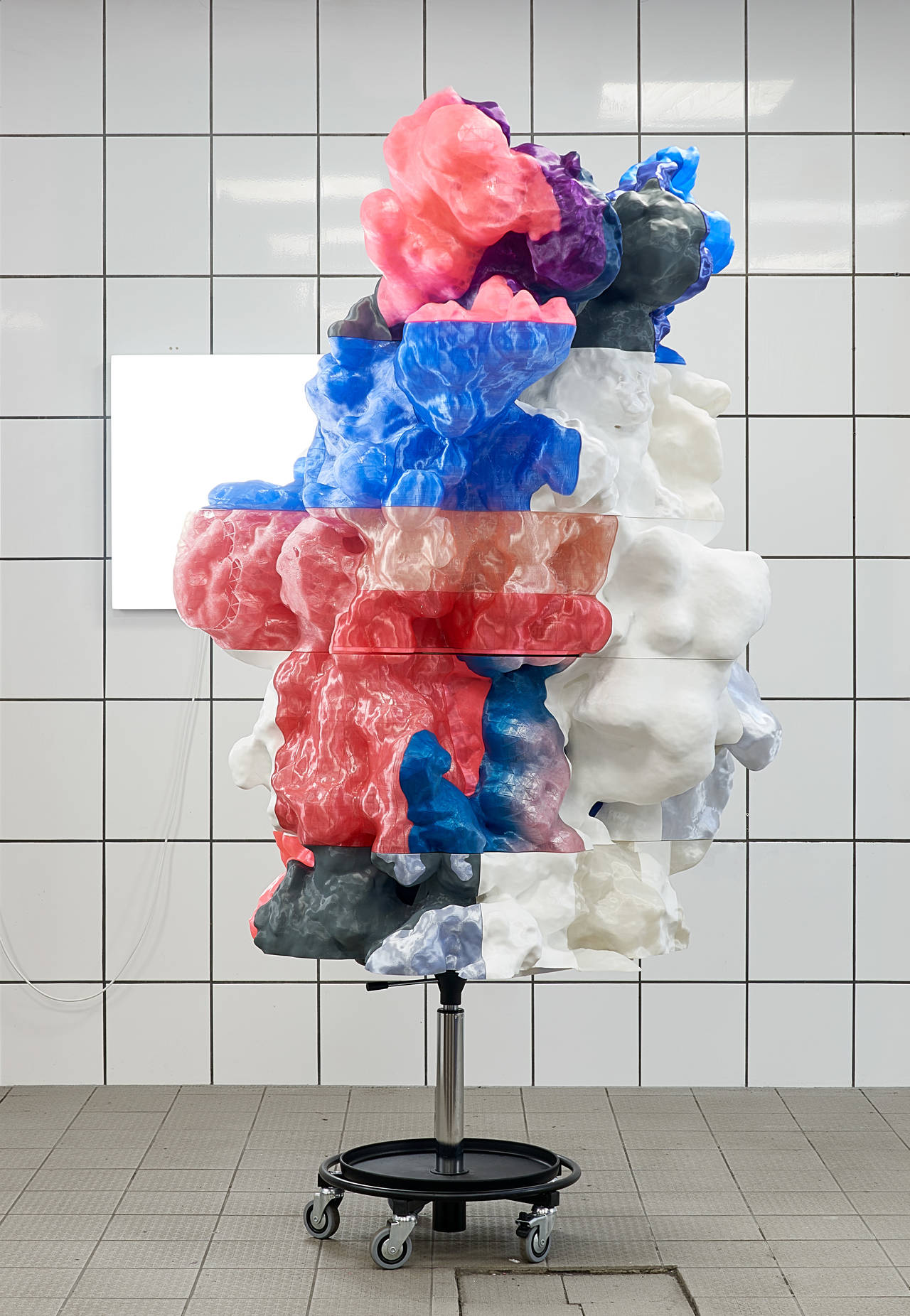
THE PROMISE OF FUNGI
Fungi are the queendom of species that includes molds and yeasts. Mushrooms are the fruiting bodies, much like an apple on a tree, of some fungal species. Fungi are everywhere; we inhale their spores as we walk through forests and cities alike as mycelial threads meet our feet with every step. Mycelium is the root-like system of some species of fungi; it is made of microscopic filaments like fine hairs that reach through earth. Fungi are lively, creative, they can sense our presence and actively engage with the worlds of flora, fauna, and funga around them.
Since 2007, when fungal materials were first engaged as an environmentally friendly alternative to plastics, mycelium have been engaged by a number of inventors and artists as a new material, and a new great hope in an age of anthropogenic climate disaster. There are seemingly endless ways mycelium and mushrooms can be used: as a synthetic leather in the fashion industry; as a new building and design material; as a biodegradable packaging material; to make robots that are partially alive and conscious; in pest control; to clean up oil spills; as medicine; for mental health; and last but certainly not least, to biodegrade plastics. Fungi, in all their genius, present us with solutions to a myriad of the problems we face today amidst climate disaster in late-stage capitalism.

MY-CO SPACE by MY-CO-X © tinyBE #1, photo: Wolfgang Günzel, Image via tinybe.org
HUNGRY FUNGUS
A hungry fungus is a useful thing for the problem of plastic pollution. In his viral TED Talk, mycologist Paul Stamets claims mushrooms can save the world. One fungal superpower of world-saving scale is their capacity to mycoremediate — a process whereby the lifeways of fungi, such as their appetite, serve to break down environmental pollutants. Fungal appetites have been shaping the world for millions and millions of years. In addition to their role in making life on land possible, fungi greatly slowed the formation of fossil fuels when they evolved the capacity to digest the lignin of fallen trees roughly 300-million years ago. Prior to this, dead trees would pile up endlessly. Eventually the fallen trees would fossilize and become the fossil fuels we use today. Fungi have a long history of metabolizing fossil fuels and their derivatives. The relative newness of plastics means the great decomposers on our planet are still evolving the capacity to metabolize these persistent materials faster than the thousands of years it normally takes to puzzle out the disassembly of new materials.
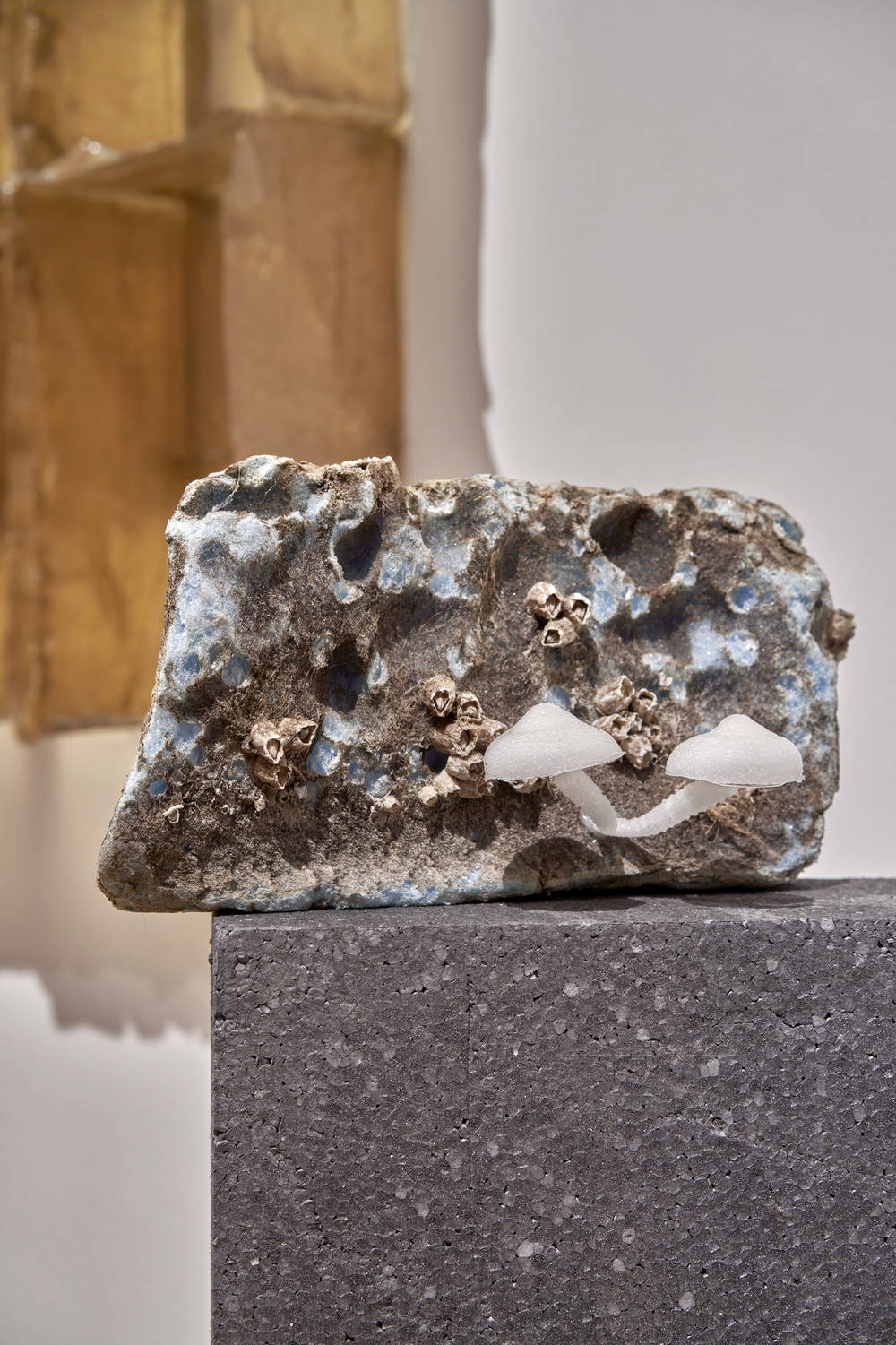
However, there are a handful of fungal species that have shown an ability to eat and break down the complex molecular structures of plastics into their most basic compounds in a matter of weeks or months. Pleurotus osteratus, or oyster mushrooms, have a remarkable ability to break down plastic and remain edible. Pestalotiopsis microspore, another plastic-eating fungus was discovered by a group of researchers at Yale in the Amazonian rainforest of Ecuador, and taken up by Danish artist Tue Greenfort in his latest work "Fungi Decomposition", currently on show at the SCHIRN. But even though these fungi may eat plastic, they do not necessarily have a desire to consume it. Mycologist Jasper Degenaars says that Pestalotiopsis microspore “[doesn’t] want to eat plastic” and will eat everything else around them first. Without ceasing the production of plastic, we are asking fungi to eat up a human-made mess we continue to make.
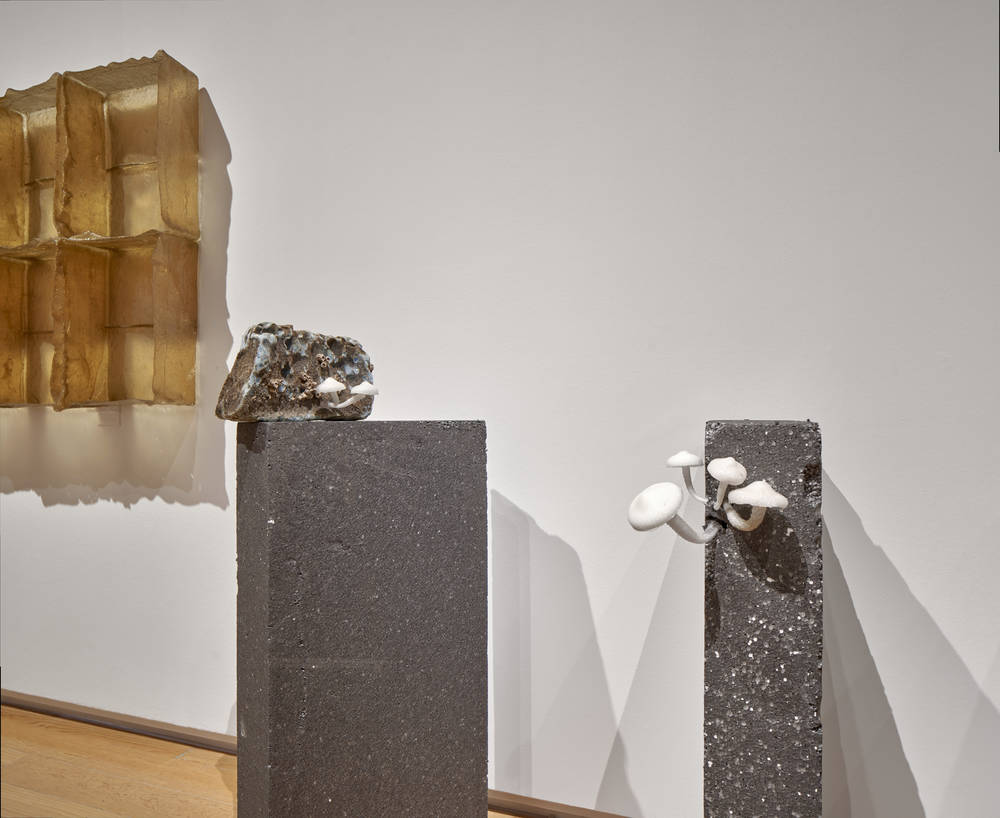
ANTHROPOCENTRIC SOLUTIONS FOR ANTHROPOCENTRIC PROBLEMS
Inventors created the earliest plastics to deal with the rising costs of elephant ivory, as their tusks were being carved into pool balls and piano keys. Plastic-based materials such as synthetic leather have spared countless animal lives from slaughter for their ivory and skin. At the same time, the advent of plastic has caused great harm to all of life on earth. Today, as we turn back to the more-than-human for solutions to the problem of plastics, it is worth considering what unintended consequences could arise from using fungi. If we approach fungi with the same anthropocentric utilitarianism as we did plastic, and nothing else fundamentally changes — we continue to produce extraordinary amounts of plastic — our plastic pollution problem will not be solved by the promise of fungi.

Ivory pool balls, Image via trift.org
The enthusiasm for fungal possibilities is certainly not unfounded. Fungal collaborations are plentiful, promising, fundamental to our survival, and there are still myriad possibilities we may yet dream up. Yet, if we maintain the status quo of plastic production, and sweep fungi up into capitalist modes of productions whereby a handful of companies make an awful lot of money off the favours fungi perform for human-benefit — the problems this planet and all its inhabitants are facing will persist. In our engagements with this agentive kin(g)dom: How might we approach our relationship with fungi and their incredible material possibilities and world-saving capacities with more reciprocity? How can we make ourselves useful to fungi, too?









